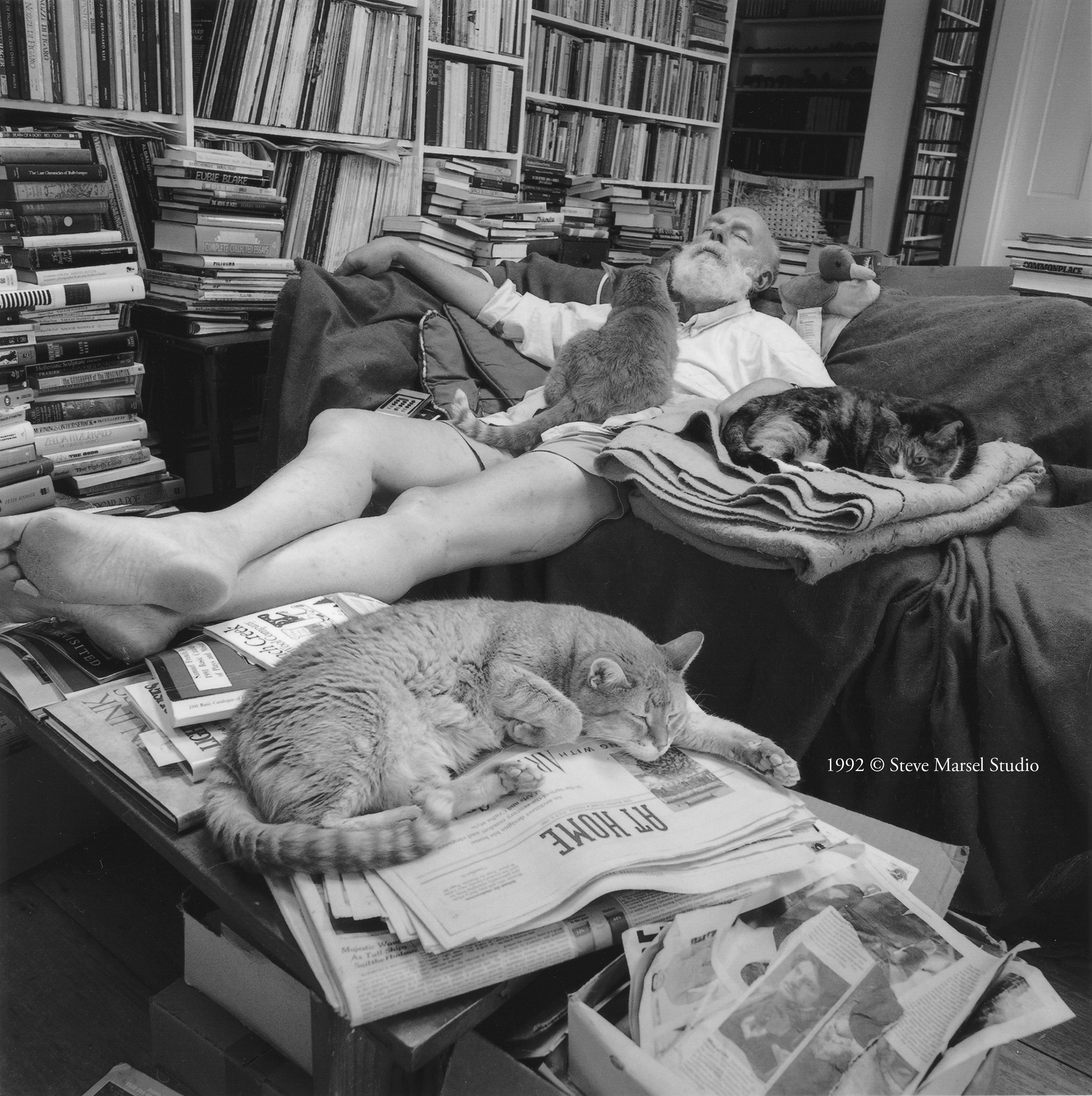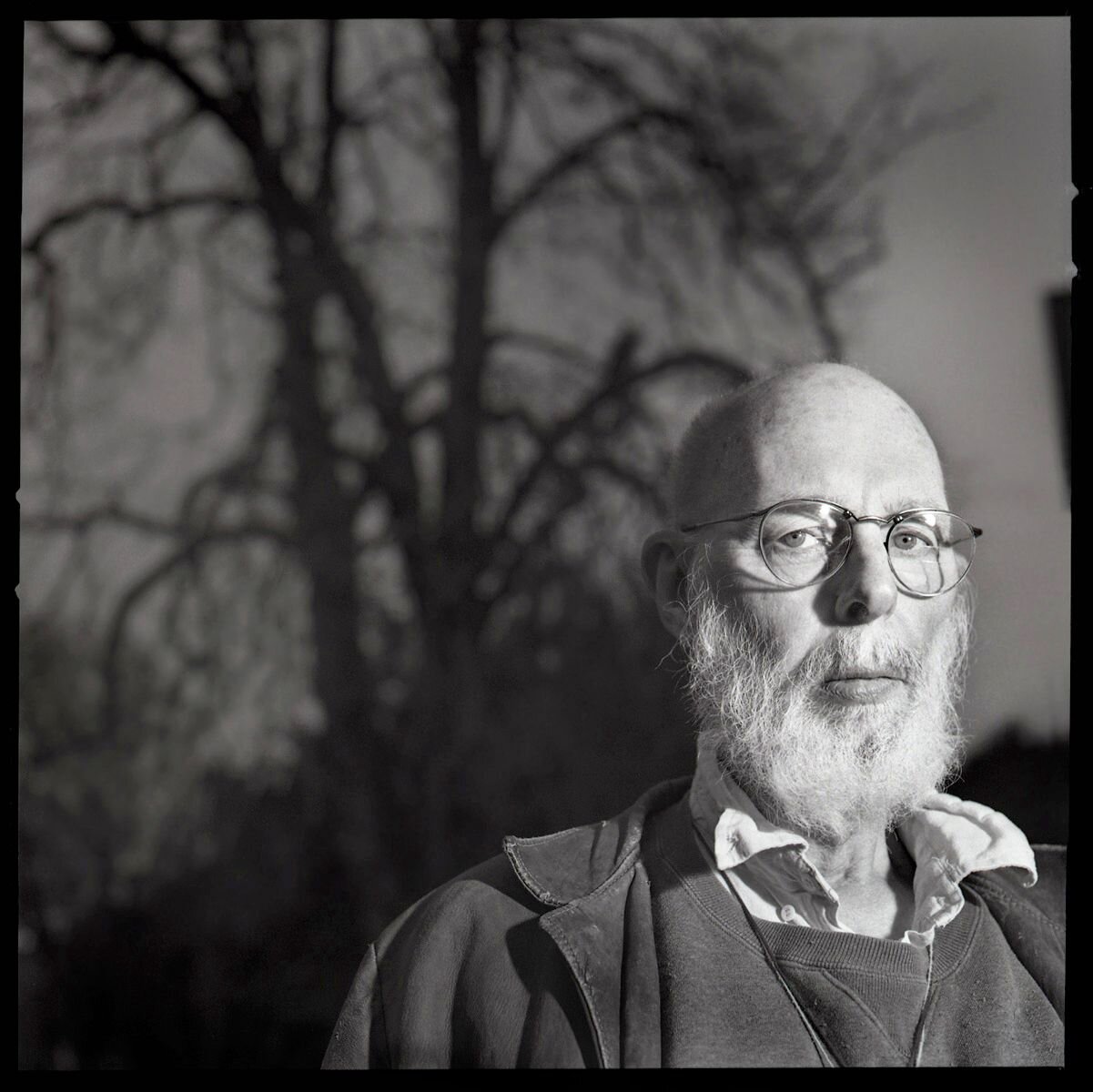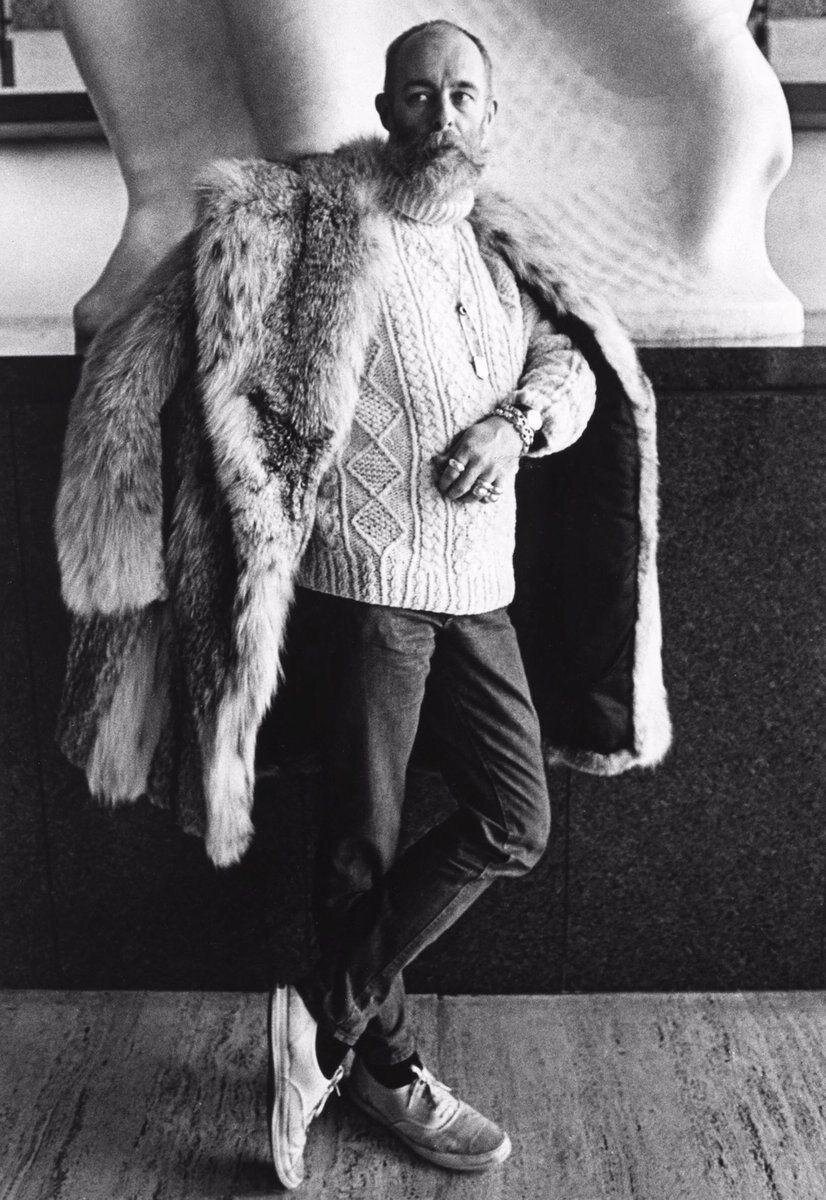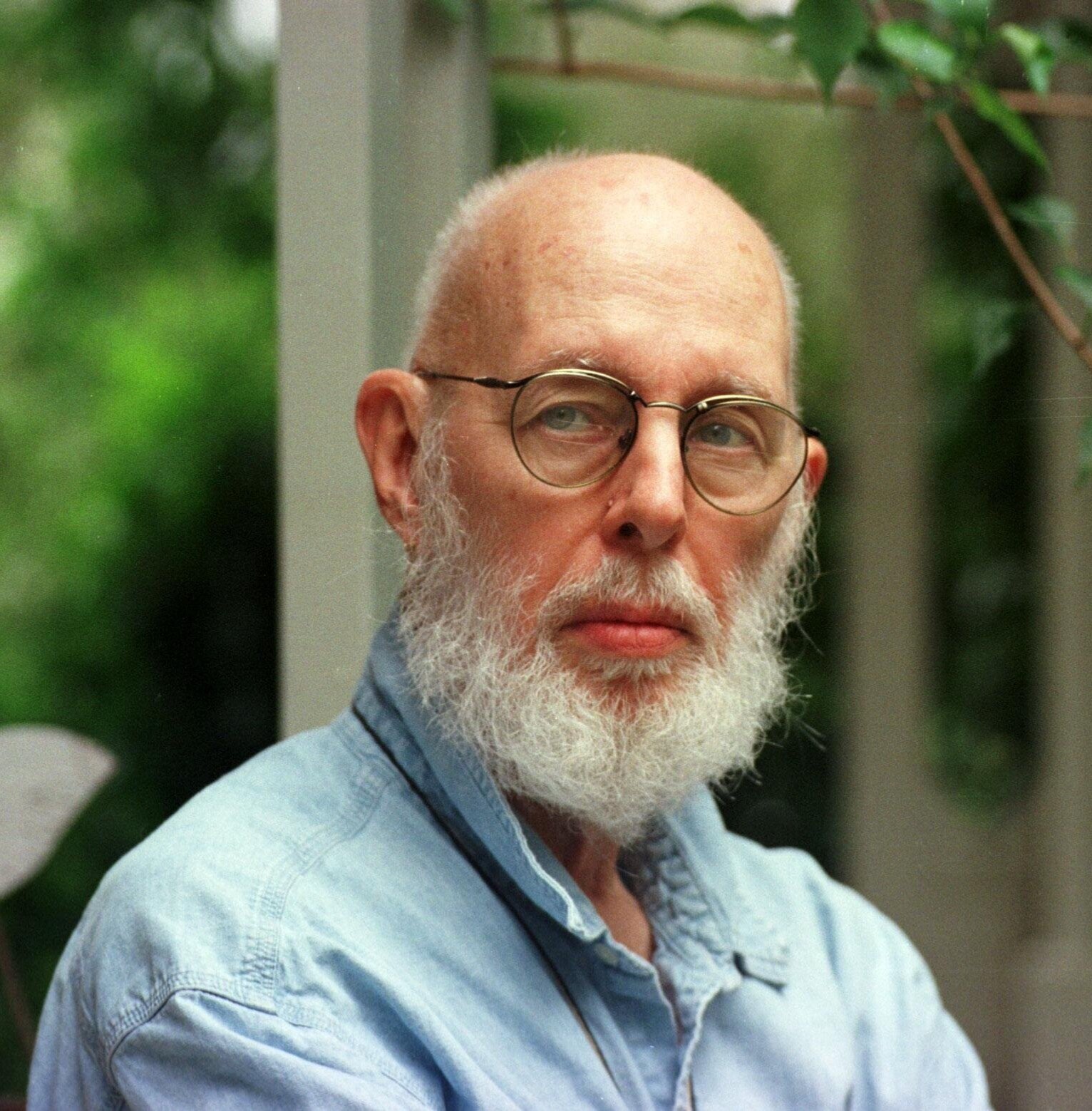About Edward.
The Edward Gorey House is the former dwelling of author and artist EDWARD ST. JOHN GOREY, who owned the House from 1979 till his death in 2000. The House became a museum in 2002.
Edward was a child prodigy, drawing pictures at 18 months, and teaching himself to read by age three. Edward’s upbringing was chaotic with his parents constantly moving within Chicago. Edward skipped several grades, eventually ending up at the Francis Parker School in the ninth grade. He emerged from Francis Parker an exceptional student, active in school events, exhibits, school publications, and even getting drawings published in Chicago newspapers. At graduation, Edward had the highest regional scores on college boards and received scholarships to Harvard and Yale and other academic institutions. After graduation from Francis Parker, with pending draft notices at the age of 17, Gorey enrolled for some art courses at the Art Institute of Chicago before entering the U.S. Army. He served during World War II from 1943 until after the end of the war—primarily at the Dugway Proving Grounds in Utah.
In 1946 he enrolled at Harvard (majoring in French Literature) and began pursuing numerous artistic interests, publishing stories, poems, designing sets, directing and writing for the influential Poets Theatre (with John Ashbery, Frank O’Hara, Alison Lurie, Violet Lang, and others). He occasionally achieved the Dean’s List (and frequently was threatened with expulsion). In 1953 he was offered a position with Doubleday's new imprint Doubleday Anchor in New York City (Gorey had attended Harvard with Barbara Epstein, the wife of Doubleday Anchor publisher Jason Epstein). Gorey rapidly became a significant figure in the New York design world, designing more than fifty covers and, more importantly, becoming recognized as a major commercial illustrator. Gorey moved through other publishing Houses (Looking Glass Library, Bobs-Merrill) before finally turning freelance in the early 1960s—a position he maintained for the rest of his life. There is no firm count as to the number of books Gorey illustrated for others, but likely well over five hundred. In addition to this massive commercial workload, Gorey began writing and illustrating his own works (which would eventually number 116) starting with his 1953 book, The Unstrung Harp. The book stands today as one of the early precursors to the graphic novel movement in which both text and illustration tell the story. Graham Greene declared The Unstrung Harp “the best novel ever written about a novelist and I ought to know!” The London Times referred to it as “a minor masterpiece.” Writing in The New Yorker, America’s pre-eminent literary critic Edmund Wilson gave Gorey his first early critical boost. Gorey’s fifty years of exceptional productivity had begun.
Soon after his arrival in New York City, Gorey became a serious admirer and frequent attendee of George Balanchine’s New York City Ballet (in fact, Gorey attended every performance of every production that had been choreographed by Balanchine). He often referred to Balanchine as a major influence on his work. Gorey had established an early association with New York City’s Gotham Book Mart in the early 1940s while in the Army. As a voracious reader he started accumulating a unique library (which eventually numbered some 25,000 books by the time of his death) many of which he had read more than once. In New York City in early 1953 he began making frequent visits to the Gotham Book Mart and became a close friend of the bookshop’s founder Frances Steloff. When he launched his own private press imprint (The Fantod Press) in 1962, he sold many of his copies through the Gotham Book Mart.
Gorey had begun exhibiting his art work as early as 1939 at the Francis Parker School and continued in his Harvard years at the Mandrake Bookshop and as far away as California. In December of 1967 Gotham Book Mart announced the opening of a second floor art gallery in its brownstone and invited Gorey to be among its first exhibitors. He exhibited there for the next thirty-two years, until his death. As a result of this association, Gotham Book Mart began to occasionally publish new Gorey works and eventually arranged for Gorey publications with Samuel Beckett, John Updike and others. The theater had always interested Gorey and he was soon involved in off-Broadway productions, and eventually in summertime small Cape Cod productions of Gorey experimental plays, working with local amateur actors and even puppets, to the delight and puzzlement of the local community. In 1973 Gorey designed a production of Dracula for a small theater on Nantucket Island. It attracted considerable interest and in 1977 opened on Broadway as “Edward Gorey’s Dracula.” A huge commercial success with extraordinary reviews, it garnered two Tony Awards (Best Revival and Best Costumes), ran for almost three years and subsequently with road companies across America, in London, Australia, and elsewhere.
Gorey’s writings and art began to receive serious critical reviews and praise and have been translated into fifteen foreign languages (beginning in 1961 with his Swiss German publisher Diogenes Verlag). In 1972 he published his first anthology Amphigorey containing fifteen of his early works. The New York Times selected it as “One of the Five Noteworthy Art Books of 1972.” Three more anthologies followed (Amphigorey Too, Amphigorey Also, and Amphigorey Again) and have now become Gorey classics and the cornerstones of his large body of work. Gorey’s strong interest in book design eventually expanded into various forms including miniatures, pop-up books, books with movable parts and other unusual formats.
In 1975 Gorey became involved in printmaking and for the next twenty-five years he explored and produced a variety of limited-edition prints. Through the 1980s and 90s Edward worked with Brewster, MA printmaker Emily Trevor to produce an outstanding assortment of etchings and holographs.
Gorey’s family had visited and lived on Cape Cod for years and he spent most of his summers there. In 1979, with royalties from the New York Dracula production, he purchased a two-hundred year old sea captain’s home on the Yarmouth Port Common and in 1983 resolved to leave New York City and live on the Cape. There Gorey became even more active with his small experimental plays, continuing to publish widely, exhibit his art, create etchings, and maintain a grueling workload of commercial projects. In February 1980 Gorey was asked to design animated introductions for Boston Public Television’s Mystery! series. Working with animator Derek Lamb and his team, their collaborative result continues, over 30 years later, to be Gorey's most iconic work (though it is in fact a half-minute distillation of several of his works).
Although Gorey avoided “explaining” his many enigmatic books, during one of his interviews he did say to an inquiring journalist, when asked about his philosophy or religion, that he was a Taoist, and perhaps a surrealist. From his early teen art there are strong homages to Di Chirico, Dali, and Ernst clearly in evidence, as is his admiration for Sir John Tenniel, George Herriman, and James Thurber.
A longtime advocate of animal welfare, Gorey kept pets from his earliest years, and cats during his New York and Cape Cod years. He left his estate to The Edward Gorey Charitable Trust which he established for the welfare of all living creatures, including not only cats, dogs, whales, and birds, but also bats, insects, and even invertebrates. After his death in 2000, his Cape Cod home was converted into the Edward Gorey House, a museum whose profits and programs help benefit animals rights and literacy causes. Located in the park-like setting of the Yarmouth Port common on an elegant “horseshoe” of several attractive old New England homes, the Edward Gorey House has become a landmark cultural attraction contributing to the community with annual exhibitions, children's events, and literary programs (for children as well as adults). The House is open to the public mid- April through December with an annually changing exhibit and permanent displays.
With a creative body of work—humorous, complex, serious and provocative—Edward Gorey’s diverse works have established him as an important American figure in literature, art and theater.
"[Edward] Gorey’s unique talent should be represented as completely as possible in every collection of American art and literature."
— American Library Association (booklist)
"An extraordinary imagination."
— Publisher’s Weekly
"A great American illustrator… fascinating."
— London Observer
"Edward Gorey’s works are equally amusing, somber, and nostalgic… I like to return to them. He is really becoming a master."
— Edmund Wilson
"[Edward Gorey is] sublime, absurd and mystical."
— Oskar Kokoschka
"A major graphic artist… his originality is profound."
— Commentary (John Hollander)
"Dark masterpieces of surreal morality…beautifully depicted."
— Vanity Fair
"One of the great American artists of the 20th century."
— Book Page
"A unique bygone world… carefully crosshatched [books], startling, superb, consummately mature."
— John Updike
"An American original… one of this century’s foremost eccentric geniuses."
— Print Magazine
"Exquisitely engraved, each picture tells a story… a masterly draughtsman’s technique."
— London Times
"Incredibly sophisticated…stylish and inventive."
— New York Observer
"Unforgettable, magic, insightful and mysterious… as full of wisdom as of delight."
— The Baltimore Sun
"One of the most literate and sophisticated graphic masters of our time."
— UCLA Performing Arts
"Luxuriously crossed and crosshatched… marvelous drawings. A gallery of splendid gloom… matchless beauty and richly satisfying… [a] delightful entertainer."
— New York Post
"Not enough praise has been awarded to Gorey’s superb prose. He possesses the ear of a great parodist… a distinctive vision that is nobody’s but his own. Through his genius and industry, he created a whole climate of the imagination…"
— Washington Post
“I worship Edward Gorey.”
— Alison Bechdel
Edward Gorey published over one-hundred of his own works and has illustrated the works of Samuel Beckett, T.S. Eliot, John Updike, Charles Dickens, Edward Lear, Lewis Carroll, Hilaire Belloc, John Ciardi, Muriel Spark, Edmund Wilson, Peter Neumeyer, Virginia Woolf, H.G. Wells, Florence Parry Heide, Bram Stoker, Raymond Chandler, Gilbert & Sullivan, and many others.




